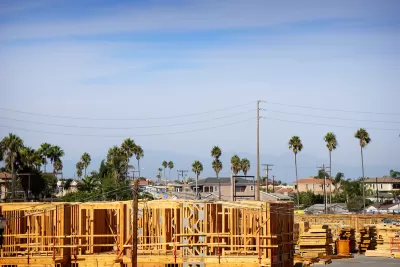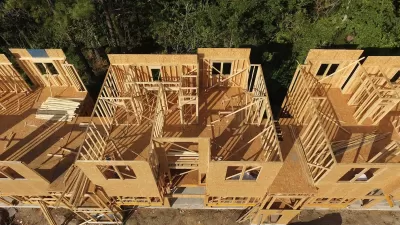Housing advocates worry that, without government guardrails, buildings may not remain affordable or well-maintained in the long term.

“Across California, efforts to address the homelessness crisis by building more affordable housing with government money have been plagued by sky-high costs,” reveals an article by Christine Mai-Duc and Will Parkers in The Wall Street Journal, prompting some developers to forgo government subsidies to bring down construction costs for affordable housing.
“Some affordable-housing veterans worry whether privately funded construction can scale quickly enough to match the scope of the homelessness problem and whether its backers will maintain their commitments to serve the needy.” But developers argue sticking with private financing cuts millions in ‘soft costs’ and makes affordable housing production faster. “Advocates have also questioned how many buildings reliant on renters with housing vouchers can be sustained unless the federal government greatly increases funding for them.”
In California, recent legislation is making it easier for privately financed affordable housing developments to move forward. As the article points out, “Though construction doesn’t use public financing, many privately funded buildings would likely still depend on government funds to operate. Formerly homeless residents at SDS-financed properties, for example, are expected to use federal housing vouchers or other rental assistance to pay rent. The properties can also qualify for property-tax exemptions.”
FULL STORY: Why Private Developers Are Rejecting Government Money for Affordable Housing

Planetizen Federal Action Tracker
A weekly monitor of how Trump’s orders and actions are impacting planners and planning in America.

San Francisco's School District Spent $105M To Build Affordable Housing for Teachers — And That's Just the Beginning
SFUSD joins a growing list of school districts using their land holdings to address housing affordability challenges faced by their own employees.

The Tiny, Adorable $7,000 Car Turning Japan Onto EVs
The single seat Mibot charges from a regular plug as quickly as an iPad, and is about half the price of an average EV.

Seattle's Plan for Adopting Driverless Cars
Equity, safety, accessibility and affordability are front of mind as the city prepares for robotaxis and other autonomous vehicles.

As Trump Phases Out FEMA, Is It Time to Flee the Floodplains?
With less federal funding available for disaster relief efforts, the need to relocate at-risk communities is more urgent than ever.

With Protected Lanes, 460% More People Commute by Bike
For those needing more ammo, more data proving what we already knew is here.
Urban Design for Planners 1: Software Tools
This six-course series explores essential urban design concepts using open source software and equips planners with the tools they need to participate fully in the urban design process.
Planning for Universal Design
Learn the tools for implementing Universal Design in planning regulations.
Smith Gee Studio
City of Charlotte
City of Camden Redevelopment Agency
City of Astoria
Transportation Research & Education Center (TREC) at Portland State University
US High Speed Rail Association
City of Camden Redevelopment Agency
Municipality of Princeton (NJ)





























